Sour gum, Black gum, Tupelo
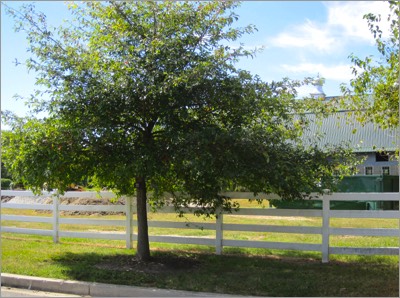
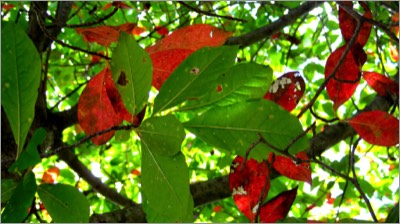
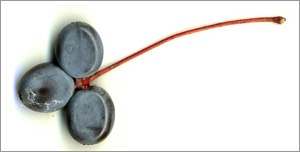
Typical fruits from another tree on campus (female tree).
Nyssa sylvatica
SOUR GUM
Nyssaceae
E. North America
Location: map coordinates Q-2 (east of fence around old barn, on Loop Road), N 39°11'10'' W 75°32'49''
Planting history: presently unknown.
Description:
Native species, State Rank S5 (very common in Delaware)
SOUR GUM
Nyssaceae
E. North America
Location: map coordinates Q-2 (east of fence around old barn, on Loop Road), N 39°11'10'' W 75°32'49''
Planting history: presently unknown.
Description:
- deciduous tree
- etymology: Nyssa from Nyssa a water nymph (because the first Nyssa species described, N. aquatica, grows in swamps); sylvatica = of the woods
- also called tupelo, black gum
- leaf egg-shaped, elliptic
- dioecious or polygamodioecious (male and female flowers mostly on separate trees, but some flowers perfect)
- fruit drupe (stone fruit); fleshy, dark blue; eaten by wildlife
- autumn foliage orange/scarlet; one of first trees to turn color in the fall
- bark dark, deeply checkered
- pith chambered
- habitat lowlands; moist woods
Native species, State Rank S5 (very common in Delaware)
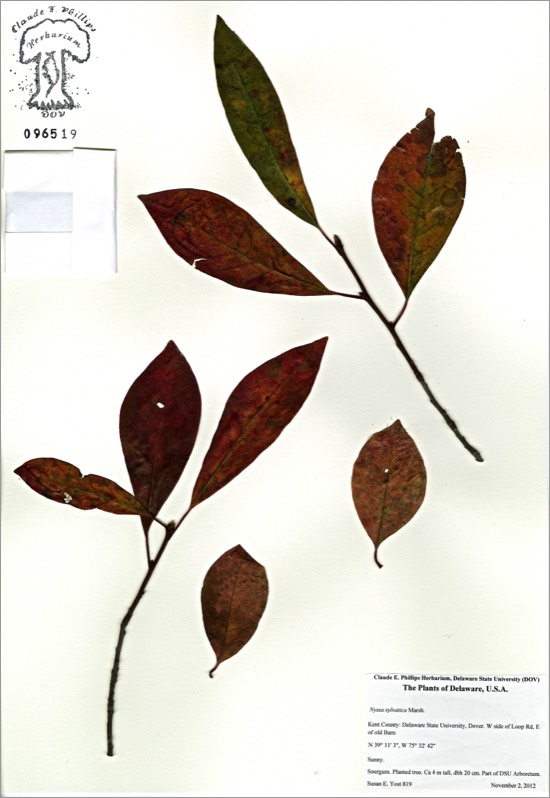
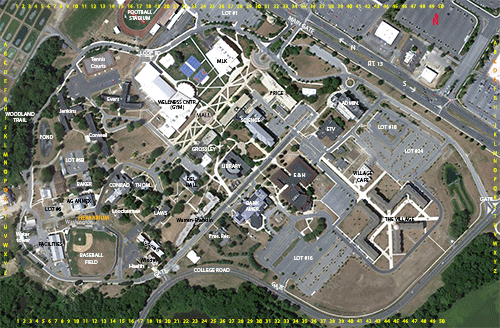
HIT REFRESH TO START LOCATION GRAPHIC